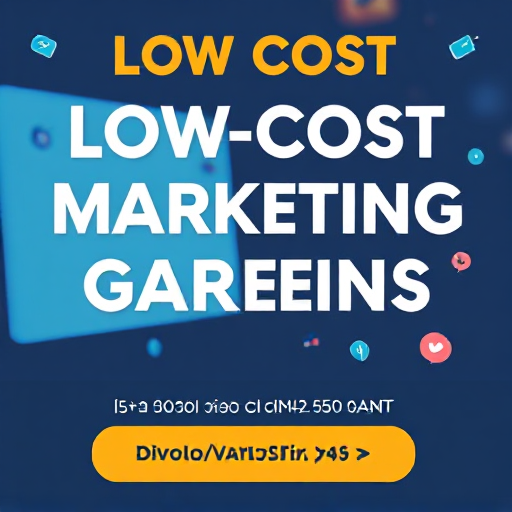How To Scale Your Content Strategy On A Tight Budget
Scaling your content strategy on a tight budget requires a combination of smart planning, resourcefulness, and leveraging available tools and techniques. Here’s a detailed guide on how to achieve this:
How to Create Engaging Content on a Tight Budget
1. Develop a Clear Content Plan
A well-defined content plan is the cornerstone of scaling your strategy efficiently. Outline your content goals, target audience, key messages, and the types of content you’ll produce. Create a content calendar to schedule your content production and distribution. This ensures consistency and helps you manage resources effectively.
2. Prioritize High-Impact Content
Focus on creating high-impact content that can deliver the most value with minimal resources. Identify the content types and topics that resonate most with your audience. Use analytics tools to track engagement and performance, and double down on what works. High-impact content includes evergreen articles, comprehensive guides, and engaging multimedia like videos and infographics.
Why Affordable Content Creation is a Game-Changer
3. Leverage Content Repurposing
Repurposing content is a cost-effective way to scale your strategy. Transform existing content into different formats to reach a broader audience. For example:
- Turn a blog post into a video tutorial or podcast episode.
- Create infographics or slide decks from research articles.
- Extract quotes and snippets for social media posts.
This approach maximizes the value of your content and reduces the need to create new material from scratch.
4. Use Free and Affordable Tools
There are numerous tools available to help you create and manage content without breaking the bank. Here are some essential tools:
- Content Creation: Canva for design, Grammarly for writing assistance, and Unsplash for free high-quality images.
- SEO and Analytics: Google Analytics, Google Search Console, and Ubersuggest for keyword research and performance tracking.
- Social Media Management: Hootsuite, Buffer, and Later for scheduling and managing social media posts.
Creating Compelling Blog Posts Without Spending a Fortune
5. Outsource Strategically
Outsourcing can be a cost-effective way to scale your content production. Platforms like Upwork, Fiverr, and Freelancer offer access to skilled freelancers at various price points. When outsourcing, provide clear guidelines and feedback to ensure the quality of the content meets your standards. Focus on tasks that require specialized skills or are time-consuming, such as graphic design, video editing, or in-depth research.
6. Collaborate with Influencers and Partners
Partnering with influencers and industry experts can extend your reach and add credibility to your content. Look for individuals who share your target audience and values. Collaborations can include guest blog posts, co-hosted webinars, or social media takeovers. Often, these partnerships are mutually beneficial, requiring minimal financial investment.
The Best Content Marketing Strategies for Small Budgets
7. Encourage User-Generated Content
User-generated content (UGC) is a powerful and budget-friendly way to scale your content strategy. Encourage your audience to share their experiences, reviews, and stories related to your brand. Feature UGC on your website, social media, and marketing campaigns. This not only provides authentic content but also builds community and trust.
8. Optimize for SEO
Search engine optimization (SEO) is crucial for driving organic traffic to your content. Conduct keyword research to identify the terms your audience is searching for. Use these keywords strategically in your content to improve visibility on search engines. Additionally, focus on on-page SEO factors like meta descriptions, header tags, and internal linking to enhance your content’s search engine performance.
9. Implement a Content Distribution Strategy
Effective content distribution is key to scaling your strategy. Use a mix of channels to reach your audience, including:
- Social Media: Share your content across relevant social platforms.
- Email Marketing: Use newsletters to distribute your content to subscribers.
- Content Syndication: Republish your content on platforms like Medium, LinkedIn, and industry-specific websites.
Tailor your distribution strategy to your audience’s preferences and behaviors to maximize reach and engagement.
Content Syndication on Medium, LinkedIn, and Industry-Specific Websites
10. Monitor and Adjust
Regularly monitor the performance of your content to identify what’s working and what isn’t. Use analytics tools to track key metrics such as page views, engagement rates, and conversion rates. Use these insights to refine your content strategy, focusing on high-performing topics and formats. Continuous optimization ensures that your content remains effective and aligned with your audience’s needs.
Scaling your content strategy on a tight budget is achievable with careful planning, resourcefulness, and strategic use of available tools and techniques. By prioritizing high-impact content, repurposing existing materials, leveraging free and affordable tools, and collaborating with influencers and your audience, you can expand your reach and engagement without overspending. Regular monitoring and adjustments will ensure your strategy remains effective and sustainable.
For more information, email admin@1dollarcreatives.com.







